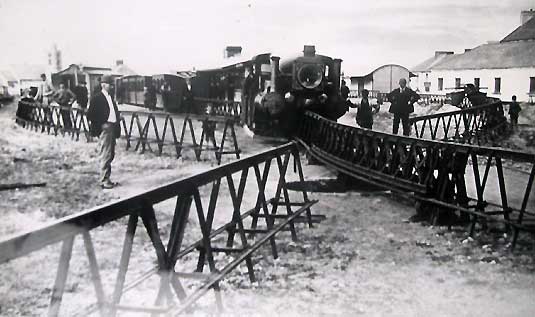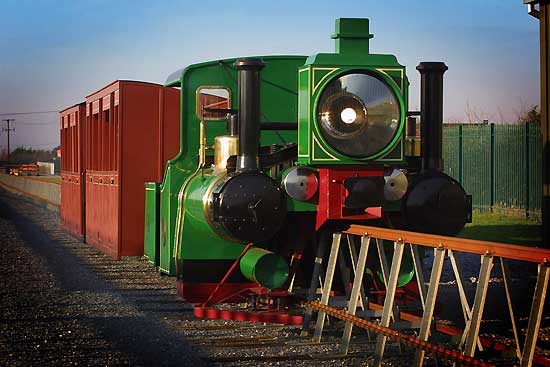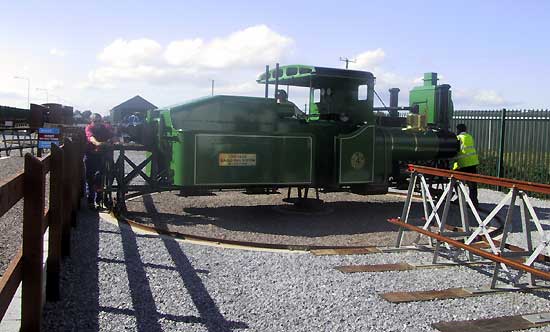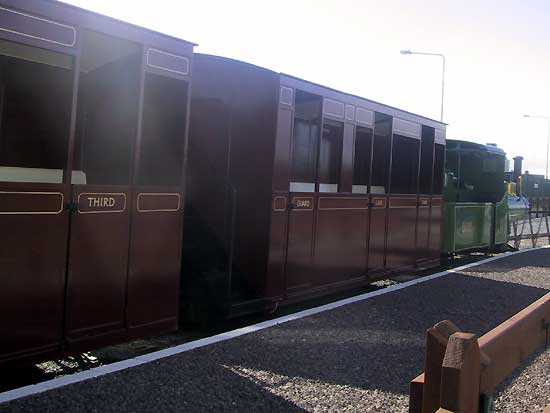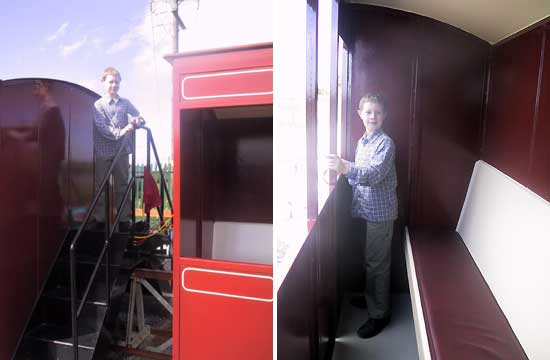Listowel's Lartigue Monorail by Cara Trant, John McCaffrey and Denis Callanan, photographs courtesy of Cara Trant, John McCaffrey and Denis Callanan
An eccentric new railway opened in North Kerry 125 years ago, which was inspired by, of all things, a camel train. Opened to the public on March 1st 1888, this unique railway was the brainchild of a French engineer, Charles Lartigue, who had seen camels in Algeria walking tall and comfortably carrying heavy loads balanced in panniers on their backs. This inspired him to design a new type of railway. Instead of two parallel tracks on the ground, it had a single rail sitting out of harm's way above the sand and held at waist height on A-shaped trestles. Specially-made carriages would sit astride the trestles like panniers.
By 1881 Lartigue had built a 90-kilometer monorail to transport esparto grass across the Algerian desert, with mules pulling 'trains' of panniers that straddled the elevated rail. In theory, a monorail system should be lighter, easier and cheaper to build than a railway with twin parallel tracks, so several European railway companies took an interest in Lartigue's novel idea. But only two Lartigues were ever built: one in France, but it was never used; an the other linked Listowel and Ballybunion, two rural towns in County Kerry in the South West of Ireland. When it opened on February 29th, 1888, it was the world's first passenger-carrying monorail. The future was looking bright, and possibly even camel-shaped!
Kerry's unique Lartigue Railway carried freight, cattle and passengers, bringing tourists to the seaside resort of Ballybunion and carting sand from the beaches. And it ran for 36 years, which was pretty amazing, because although Lartigue's design worked fine with mule trains in the African desert, it was less suited to locomotives pulling passengers and freight across North Kerry. The engines, for instance and all the carriages had to be specially made at considerable expense (each locomotive had two boilers and two cabs, balanced on either side of the rail, the driver riding in one cab and the fireman in the other). And because the elevated railway crossed the country like a fence, bridges were needed to carry roads over the line there could be no such thing as a 'level' at-grade crossing.
Loads also had to be carefully balanced a time-consuming process, especially where cattle were concerned. Even then, the Lartigue had a reputation for rolling sickeningly as it moved. It was also renowned for being noisy, unpunctual and slow, taking 40 minutes to travel the 15 kilometres between Ballybunion and Listowel. There was never enough traffic to support the route, and after the line was damaged during the Irish Civil War, the railway was closed in 1924. A short section of track was salvaged, but everything else was scrapped.
However, Kerry people do not give up easily, and a short stretch of approximately 500 meters of the Lartigue Railway opened to the public in Listowel in July of 2003. A new double-side locomotive and two carriages with capacity for 40 passengers were constructed by a railway specialist company in the United Kingdom, Alan Keef Ltd. This Heritage Railway was developed by the Lartigue Monorailway Restoration Committee, a voluntary organization from Listowel. The re-creation includes three platforms, two turntables, three switches or points, an engine shed (which houses the engine, coaches & work shop), a temporary mobile ticket office, one locomotive (no.4) which is an exact reproduction of the originals on the outside but is fitted with a Perkins diesel engine, one third-class coach and one guard third-class coach with a crossover stairway on one end. Considering the unavailability of any of the original drawings, this has been a tremendous feat of engineering, and once again people can experience this unique mode of transport. |
